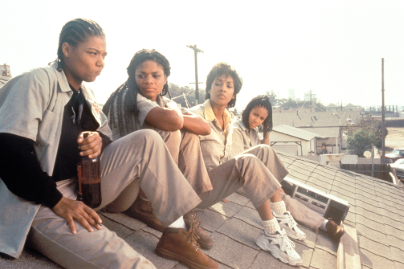Overall, in the DVD presentation, “Set-It-Off”, we see how the movie is about lives of four woman, Stoney, Frankie, T.T, and Cleo. The entire DVD shows how the environment factors, social influences, and inequalities drive individuals to engage. in criminal behavior. To bring the perspective of social structure and social process theories that goes together with the four girls and why they rob the bank. From the DVD presentation Set-It-Off, we can see how one’s environment factors and social influences have a strong impact towards someone lives, like the four girls. From my perspective of the DVD presentation Set-It-Off, I am glad to have watched it to grab a better understanding of criminology and to view the minds of individuals who have grown up in an unfavorable community.
Social Structure Theory, as proposed by thinkers like Emile Durkheim and Robert K. Merton, posits that crime often stems from the inequalities built into society. When individuals are denied legitimate means to succeed—whether due to poverty, discrimination, or inadequate education—they may resort to criminal activities. In Set It Off, the women embody this theory as they navigate a social structure that limits their ability to succeed through traditional routes. For example, Stony’s desire for justice is shaped by the police violence that claimed her brother’s life. Cleo feels suffocated by systemic racism and the lack of upward mobility. Frankie, a bank teller, is acutely aware of the oppressive financial system but sees no lawful way out. T.T., shaped by a history of abuse and neglect, feels trapped in a cycle of limited options. Their turn to crime reflects the strain imposed by these systemic barriers, which prevent them from achieving success through conventional means. Merton’s concept of “innovation” is evident in their choice to rob banks, as they reject traditional avenues for success in favor of alternative, often illegal, methods.
Social Process Theory, which includes concepts like differential association and social learning theory (as introduced by Sutherland), offers a lens for understanding the learning of criminal behavior. This theory emphasizes that individuals’ interactions with others play a crucial role in shaping their criminal tendencies. In the film, the women’s involvement in crime is heavily influenced by their social relationships. As they bond over shared struggles, they teach and learn from each other. Tisean, initially unsure and inexperienced, gradually becomes immersed in criminal activity, guided by the more seasoned members of the group—especially Cleo and Frankie, who instruct her in the ways of robbery. The trust and camaraderie they develop form the foundation for their criminal behavior.
The film demonstrates how a close-knit environment, marked by friendship and adversity, can lead individuals toward deviance. Their criminal actions are not just the result of personal weaknesses but are also shaped by their social environment. Through their collective experiences, they come to view robbery as a legitimate response to their challenges, learning from one another’s paths and ambitions.

In conclusion, Set It Off serves as a powerful commentary on how systemic inequalities and personal hardships can push individuals toward criminal behavior. Framed by Social Structure Theory and Social Process Theory, the film illustrates that crime can be seen as a rational response to a society that offers limited opportunities for empowerment, especially for those at the margins. The women’s transformation from ordinary citizens to criminals reflects their adaptation to an unjust system and their quest for agency in a world that offers them few alternatives.